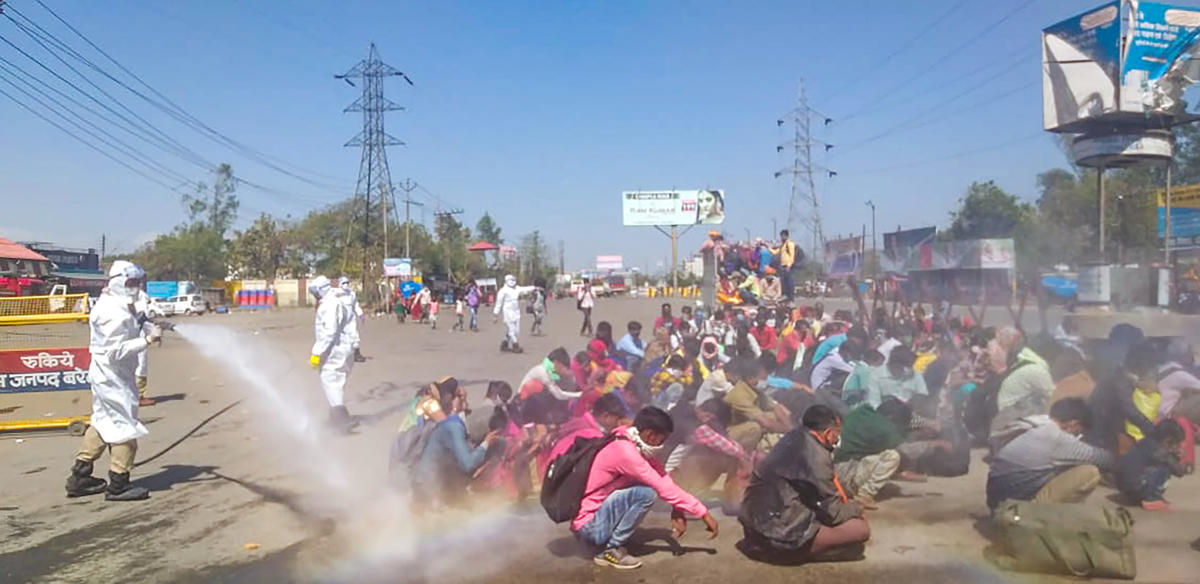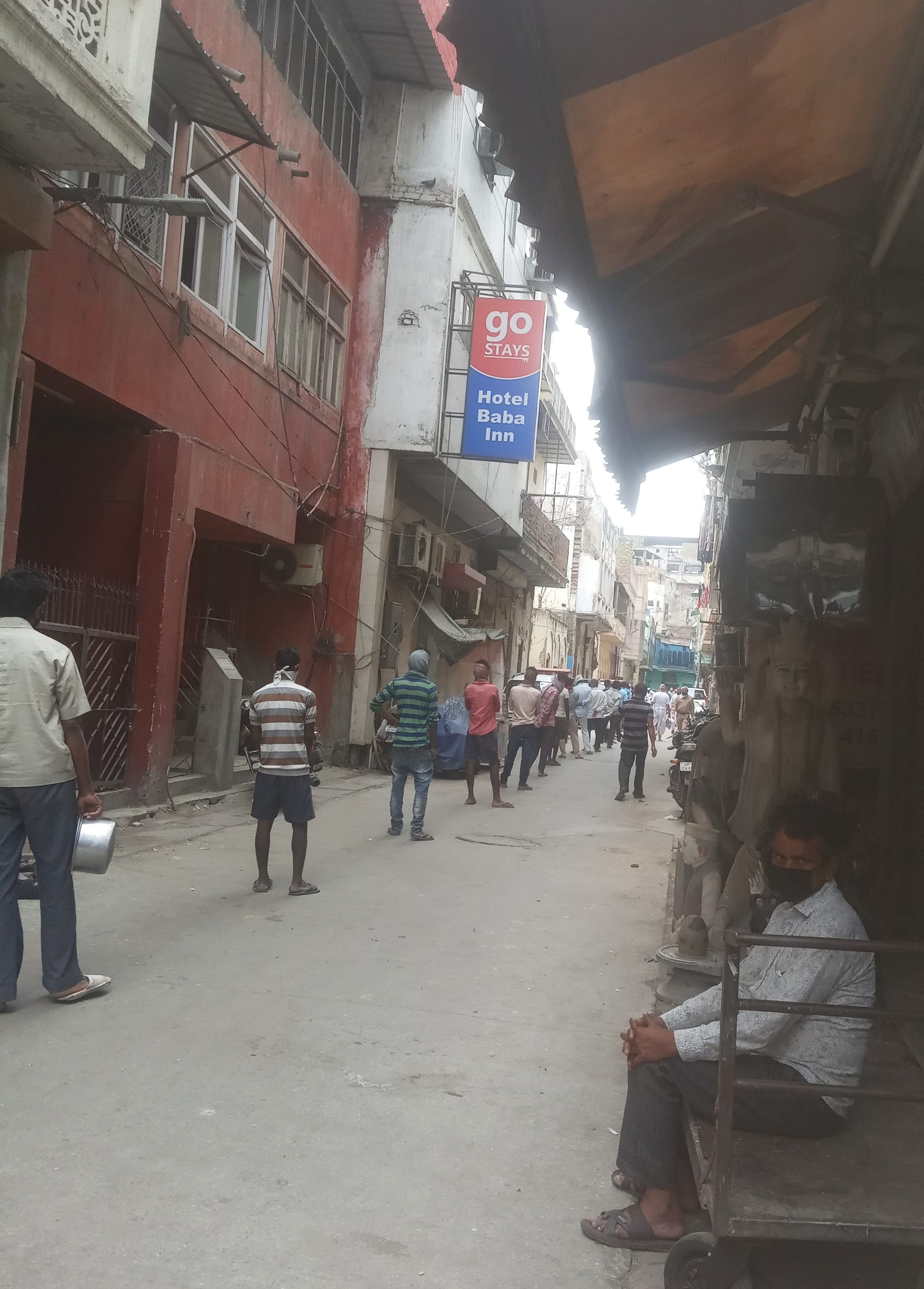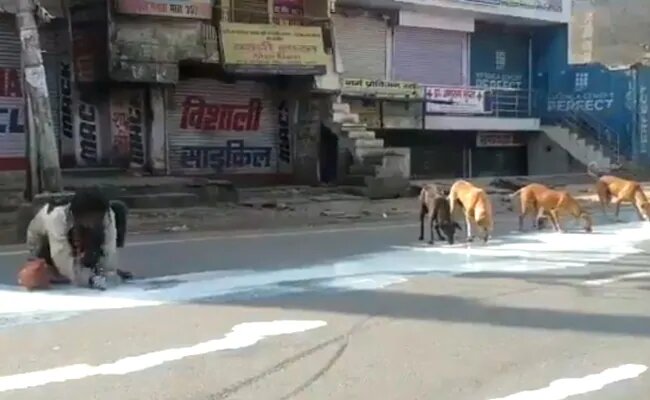After our podcast with organizer Harsh Mander, we had the pleasure of interviewing one of India’s most renowned economists: Jean Drèze. An Indian citizen, Jean has constantly fought for policies and principles that address hunger, famine, and inequality within India. We discuss these topics in the wake of Covid-19 and the effects of Modi’s policies against the poor.

(Aftermath of a train running over migrants following the tracks back home. Source: NDTV)
Asia Art Tours: We are seeing a huge crisis in the treatment of ‘hidden’ labor in the Covid-19 pandemic. From workers in ‘near slavery’ conditions in the meat-packing of the United States, to the explosion of cases in the migrant labor-force of Singapore, to prisons and ‘gig’ workers globally being sacrificed to the virus. All the violence that was ‘hidden’ is now made all too visible by this crisis.
For India, what hidden violence has this crisis revealed was an essential part of India’s economy all along? And does going back to normal mean that this violence again becomes hidden and normalized, or has Covid-19 forever changed this tact arrangement?
Jean Dreze: In India, an obvious example of hidden violence coming into full view during the pandemic is the exploitation of migrant workers. I was aghast the day all trains were cancelled without prior warning on 22 March, two days before the national lockdown began. Millions of migrant workers found themselves stranded far away from home, with no job, no-one to help and often no place to stay. After being forced to stay in place for a few weeks, sometimes twenty or thirty to a room, they started making their way home in whatever way possible. Many ended up cycling or walking over long distances in the blazing heat, sometimes carrying young children on their shoulders, eating biscuits for days on end or using plastic bottles for shoes. That’s when the media made a spectacle of their hardships and the entire country was forced to stare at this wretched but normally inconspicuous section of society. Some of these hardships, such as police brutality and harrowing travel, are actually endured by many migrant workers every year, but this time they came into full view. Many observers were moved by this painful exodus, but it is unlikely that the condition of migrant workers in India will change much in the near future. On the contrary, with their bargaining power further reduced, Indian workers are likely to be more exploited than ever in the near future. Several states, in fact, have already taken measures to extend maximum work hours from 8 to 12 hours a day, reversing the meagre gains of decades of struggle for better work conditions.
The official objective of this abrupt travel ban was to contain the spread of the virus, but quite likely, it had the opposite effect. Many of the migrant workers were stranded in places like Maharashtra, where the coronavirus had already spread, and the overcrowded conditions in which they were forced to stay for weeks made them sitting ducks for infection. Later they were allowed to fan across the country in a desperate attempt to go home, often carrying the virus with them. The out-migration states, such as Bihar and Jharkhand, which are also among the poorest states in India, are now facing the consequences. The outlook is bleak.

(Migrant workers being hosed down with disinfectant during Covid-19- Source: Twitter)
AAT: I’ve read several interviews with you, asking for India’s government to release its food stocks.
Could you explain what these are? How experts have talked about how they could be released? And of greater curiosity to me, could you explain why you think they are NOT releasing the food stocks? What is the political economy / rationale for causing this harm?
JD: In the last few years, the foodgrain stocks of the Food Corporation of India have grown by leaps and bounds, way above the official buffer-stock norms. The basic reason for this is that foodgrain procurement has consistently exceeded distribution. Procurement levels are driven by minimum support prices. Distribution levels are determined by the National Food Security Act, which entitles two thirds of the population to subsidised food rations from the public distribution system. Procurement and distribution are out of step with each other, with the former exceeding the latter in recent years. At the beginning of March, foodgrain stocks were close to 80 million tonnes, more than three times the buffer-stock norm.
There is an obvious case, right now, for using the excess stocks for crisis relief. This has been done to a limited extent. For instance, during the last three months, food rations have been doubled. This helped a lot of people, but the government did it partly to make room in the warehouses for further procurement after the wheat harvest. Due to continued procurement, the food stocks are still going up, but there is no news of further food assistance measures. It would be easy to use the excess food stocks not only to extend the doubling of food rations beyond the end of June, but also to expand the coverage of the public distribution system. As things stand, hundreds of millions of people are left out, including many poor people. Unless the government announces a new wave of food assistance measures very soon, there is a real danger of widespread hunger during the rainy season, the hardest part of the year for poor people in large parts of rural India.
This brings me to your question, why is the Indian government so reluctant to release excess food stocks for crisis relief? One reason has to do with food-subsidy accounting. In India, the so-called food subsidy essentially pays for the losses the Food Corporation of India makes when it buys at minimum support prices and sells at subsidised prices, also spending money on transport and storage. As it happens, however, the food subsidy does not enter the central government’s accounts until stocks are released. In economic terms, releasing excess stocks is costless, and even saves money. But in accounting terms, it is expensive. This anomaly makes it harder to release food stocks, because credit-rating agencies watch the fiscal deficit, not the food economy.
The other reason is that the the central and state governments in India are locked in what economists call a “chicken game”. The states want extra foodgrain for free, the centre wants to charge them something like the market price, and both sides are digging their heels in the hope that the other side will cave in. The poor are paying the price of this stalemate.

(Migrant workers and unemployed waiting in line for food rations from a local Delhi charity. Source: Wikipedia)
AAT: What was the general health of established social-security schemes in India prior to Covid-19? And under capitalism, how do we convince governments to build social systems that are often against the interests of capital, finance or neoliberalism? In other words, If we’re heading to a Thatcher/Randian Future of “no society”, how can we build or convince governments to build social systems?
JD: On the face of it, India has the basic foundations of a social security system. As I said, two thirds of the population are covered by the public distribution system under the National Food Security Act. The National Rural Employment Guarantee Act gives every rural household an opportunity to earn a basic wage on local public works, for up to one hundred days in the year. Social security pensions are in place for the elderly, widows and disabled persons. Maternity benefits are a legal right of all Indian women under the National Food Security Act. Most children receive nutrition supplements and health services under the school-meal scheme and the Integrated Child Development Services. Elementary education is free and compulsory under the Right to Education Act. And to some extent at least, everyone has access to free health-care facilities, recently supplemented by subsidised health insurance for about forty per cent of the population.
In practice, this safety net is still rife with holes. The public distribution system, despite considerable improvement in recent years, remains prone to leakages and exclusion errors. Employment on local public works is far from guaranteed, even to those who make a formal application for it. The coverage of social security pensions remains very patchy in many states. Maternity benefits have been restricted by the Modi government, illegally, to the first living child. Further, all these schemes have low benefits: for instance, just six thousand rupees [less than eighty US dollars] per child for maternity entitlements under the National Food Security Act. So, there is still a long way to go.

(Migrant workers getting their temperature checked at a checkpoint. Source: Wikipedia)
As for convincing governments to build social security systems, I think that it basically happens through democratic struggles. India is not exactly a paragon of democracy, and civil liberties are rapidly shrinking there at the moment, but there are still many opportunities to influence public policy through democratic means. Even the right to vote, symbolic as it may seem, can help to ensure that the interests and demands of the underprivileged are not entirely ignored. In fact, most of the social security provisions I have mentioned have materialised after intense debates and battles related to electoral politics. Aside from the right to vote, many other democratic institutions can help, from the courts and the media to trade unions and street action. Of course, there are also powerful forces on the other side, including the corporate sector’s relentless efforts to undermine any form of working-class solidarity. But to say that there is no way to resist would be self-fulfilling defeatism.
AAT: Governments in many instances globally have essentially abandoned the poorest and most vulnerable members of society. In their absence we’ve seen Mutual Aid projects and initiatives try their best to fill the void. We’ve also seen activist simply occupy or use what the government is unwilling to provide (housing being the most obvious example)
Do you see a role or path for Mutual Aid to help India’s migrant, refugee, poor communities? And if the government continues to sit on its hands, will we see attempts to seize the resources the government is denying the poor?

(A starving man trying to scoop milk that fell of a transport truck. Source:PTI)
JD: Mutual aid and solidarity have been important throughout human history and that applies in India as much as anywhere else. The independence movement itself is an inspiring example. Just before the recent lockdown, India also saw an extraordinary wave of solidarity among people from all walks of life who opposed the sectarian Citizenship Amendment Act and its imminent twin, the National Register of Citizens. Having said this, everyday solidarity in India has a tendency to flourish mainly within the family, caste or community. Beyond that, caste divisions often stand in the way of mutual aid, and sometimes religious divisions too. Dr. Ambedkar, architect of the Indian constitution, put it more bluntly when he said that “caste has killed public spirit”. Perhaps that is one reason why active public support for returning migrants has been relatively low-key. Many people did help of course, including all sorts of civic organisations. But it would have been nice to see the general public opening the doors of their houses to stranded workers, hosting them cheerfully and sending them off the next morning with food and water for the journey. That must have happened here and there, but it was hardly the general pattern. It is sad to hear, for instance, that many migrant workers walked back along railway tracks or riverbeds because they were afraid of possible hostility or harassment if they walked through residential areas. The social distance between the privileged and the rest is perhaps wider in India than in most other countries, partly because of the overlap between caste and class hierarchies.
As for the prospects of an attempted popular takeover of government resources, I think that they are virtually nil. If it happens, the repression will be swift and brutal. Knowing that, most people prefer to keep their head down.

( Jean Drèze and legendary scholar Amartya Sen with their co-authored book : An Uncertain Glory – India and its Contradictions)
For more w. Dr. Drèze, we highly recommend his work with Amartya Sen : An Uncertain Glory – India and its Contradictions.

